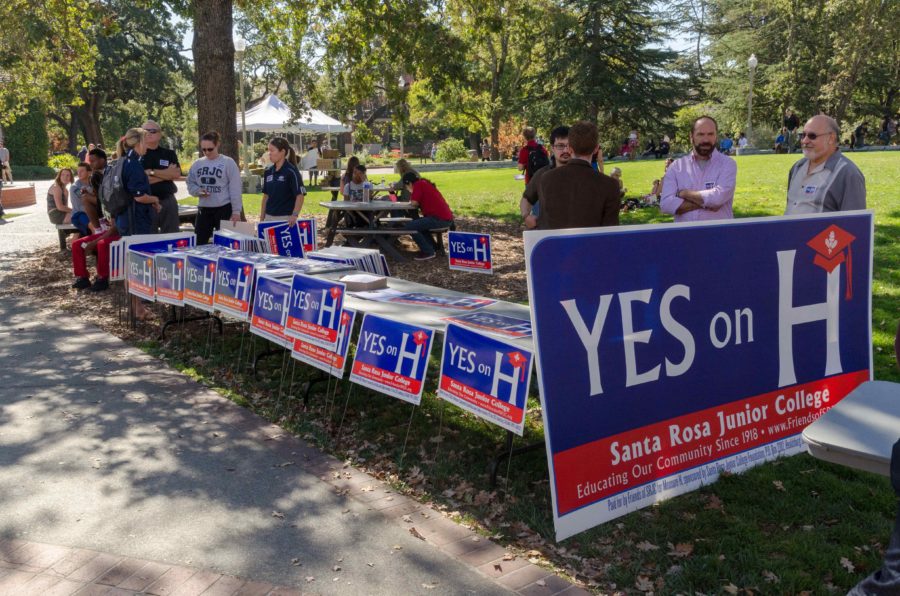SRJC could soon run out of technology funding.
If Measure H doesn’t pass, the college will run out of money to spend on technology in two to three years, according to Santa Rosa Junior College’s Information Technology (IT) Director Scott Conrad.
Conrad said SRJC’s IT team updates the college’s computer lab software at least once a year. Some labs require updates twice a year, depending on the software they run. Staff computers are replaced every five to seven years.
SRJC has a $1.5 million annual budget to spend on hardware and software, Conrad said.
“At this point in time, if Measure H does not pass we have two to three years of technology funding left, and then there’s zero — as in I won’t be able to replace any computers,” he said. “If Measure H passes, potentially $80 million of the $410 million is targeted for technology.”
However, not all of it will be spent on new PCs. Some of it will be used to update the college’s network infrastructure, which currently can’t fully support student demand.
For example, a student in the library may not be able to log in to the SRJC’s wireless network in the middle of the day because the network is full.
Classes providing instruction in Adobe applications or in languages like HTML, CSS and Unix call for an accommodation to the periodic upgrades and changes in computer studies.
Debbie Gonnella, a microcomputer lab specialist, said she believes having up-to-date computers and software in SRJC’s computer labs is important because technology changes quickly and developers constantly release new updates to meet students’ curricula. Without the updates, students might not be able to complete schoolwork.
Gonnella added that the computers in the Maggini Hall computer lab are two years overdue for an update.
“It used to be that the college kept computers for five years, just because the technology changes so fast – not that there’s anything basically wrong with [the computers] – it’s just that they don’t have the resources to run new software,” Gonnella said.
Students who have taken computer classes on campus and used the labs for more than just Internet and text-based projects know about the computers’ capacities and limitations.
Miles Levin, 19, has taken media classes on campus and had a positive experience with the college’s computers. However, he admits rendering high-definition movie sequences may be frustrating for students who rely solely on campus computers.
If there’s an available budget, a possible solution could be to have a few high-powered laptops or a couple Mac Pros in intensive editing classes, Levin said.
Evan Morton, 21, said he’s had an overall positive experience as a student using Adobe applications at SRJC’s computer labs, but admitted rendering on After Effects was tedious.
His main problem was compatibility issues between Macs and PCs. Because all the Macs in the computer labs are often occupied, he’s had to resort to using a PC, even though he has a Mac at home.
Over the years, some SRJC departments have transitioned from Macs to PCs.
Conrad said PCs are more flexible in terms of expansion and can be kept longer than Macs. The college typically buys PCs that are two years old on lease for half their listed price, but Macs don’t have a reliable used market. New Macs also cost 20 percent more than new PCs, he said.
“Mac software can only be updated by me physically touching the Mac. I have 4,000 computers that we support,” Conrad said. “Macs cost four times as much of labor than PCs; with PCs I can work more remotely.”
Conrad said Macs are still purchased for the labs that run graphic and movie editing applications because they’re better for those programs, but overall PCs outnumber Macs on campus.


